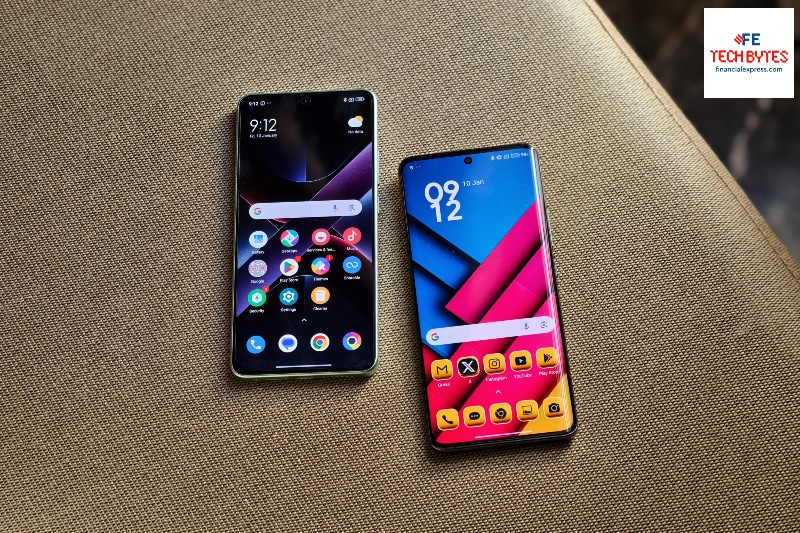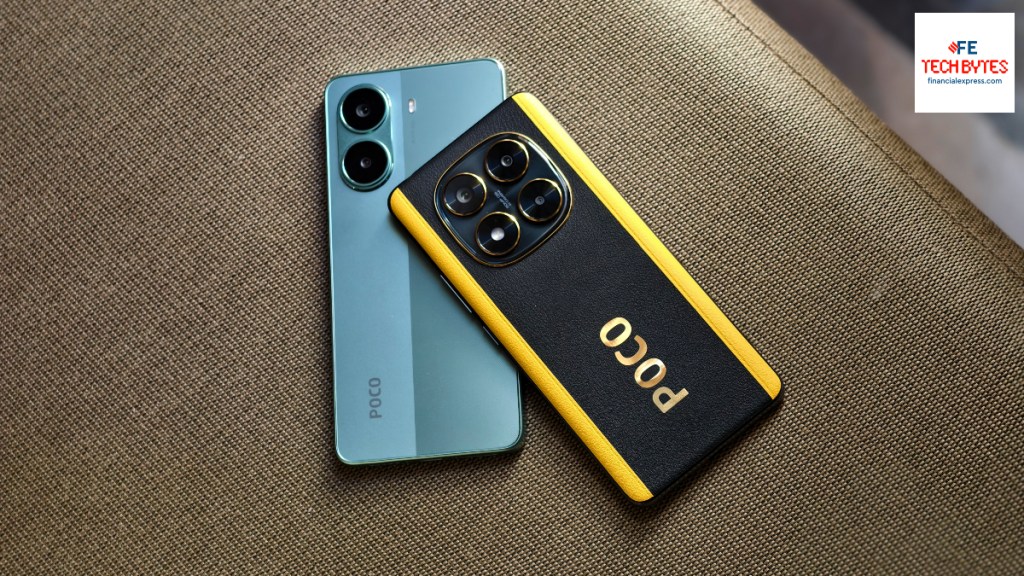Poco X7 and Poco X7 Pro, Poco’s latest smartphones in India, offer limitless value, at least on paper. This was true about last year’s Poco X6 and Poco X6 Pro as well. But the Poco X7 series takes things up a notch, from build quality, to display prowess, performance, and battery capacity—no single department has been left untouched. The upgrades are both significant and useful.
Poco X7 series: India prices
Let’s start with the pricing. The Poco X7 Pro starts at Rs 27,999 for 8/256GB and goes up to Rs 29,999 for 12/256GB. The Poco X7 starts at Rs 21,999 for 8/128GB and goes up to Rs 23,999 for 8/256GB. The prices have gone up slightly. The Poco X6 Pro was Rs 26,999 for 8/256GB and Rs 28,999 for 12/512GB. The Poco X6 came in at Rs 21,999, Rs 23,999, and Rs 24,999 for 8GB/256GB, 12GB/256GB, and 12GB/512GB, respectively.
| 8/128GB | 8/256GB | 12/256GB | |
| Poco X7 | Rs 21,999 | Rs 23,999 | — |
| Poco X7 Pro | Rs 27,999 | — | Rs 29,999 |
Poco X7 series: Hands on, first impressions
Unlike the Poco X6 and X6 Pro, the Poco X7 and X7 Pro have completely different designs. The X7 Pro is flat and boxy. The X7 has a curved chassis. Both offer “super” durability, IP69 alongside IP66 and IP68, making them also resistant to steam cleaning and water jets. The X7 Pro has Corning Gorilla Glass 7i on the front. The X7 has Victus 2. A proprietary wet touch technology makes their screens resistant to ghost touches against oil stains, foam and water. The back panel is plastic and comes in three colours—yellow, green and black for the X7 Pro and yellow, green and silver for the X7.

Both phones have the same 6.67-inch 120Hz AMOLED screens with a 1.5K (1220 x 2712p) resolution last year, but they are now brighter than before with the X7 Pro topping 3200 nits and X7, 3000 nits. Both phones support 1920 Hz PWM dimming.
Core hardware, too, is getting faster in this generation with the X7 Pro packing MediaTek’s new “all big core” Dimensity 8400 Ultra (replacing the X6 Pro’s Dimensity 8300) and the X7, the Dimensity 7300 Ultra (replacing the X6’s Snapdragon 7s Gen 2). Software choices, sadly, don’t see any changes as like last year, only one of these phones—the X7 Pro—is running the latest version of HyperOS, 2.0, based on Android 15 and therefore has a leg up over the other, Poco X7, which has Android 14 based HyperOS 1.0, in terms of long-term software support. Both phones are promised 3 years of OS and 4 years of security updates.
Poco is among the first few Chinese brands to bring a Silicon Carbon-based high-capacity battery to India. While other brands have pushed through smaller batteries using the same technology to cut short regulatory approval timelines, Poco’s gone ahead and outfitted the Poco X7 Pro with a 6550 mAh battery (which is same as the Redmi Turbo 4 from China, which this phone is based on). The phone is rated for 16-hours of continuous heavy use, per the company, which is to say that it is meant for the long haul without increasing the thickness of the phone by much, might we add. Fast charging up to 90W is supported. The X7 has a 5500 mAh battery with 45W fast charging.
The two phones have the same cameras mostly. That is a primary 50-megapixel Sony LYT600 behind an optically stabilised lens joined to another 8MP ultrawide. The Poco X7 gets an additional 2MP macro. The front camera in both phones is a 20MP. We will have more to say about them in our full review.
Poco X7 series: Final thoughts
The Poco X7 series takes everything we liked from the Poco X6 series phones and adds a bit of extra flair and polish on top of it to make for a more compelling package. The prices may have gone up and your storage options a little tighter, but Poco still manages to provide great value for money regardless of whether you pick the X7 or the more powerful X7 Pro. There’s much to look forward to and appreciate, especially for gamers who’ve been looking for a decent all-rounder without breaking the bank. In a price-sensitive market like India, where more people want more specs for less money, the Poco F7 and Poco F7 Pro, fit just right. Stay tuned for more.
Follow FE Tech Bytes on Twitter, Instagram, LinkedIn, Facebook








